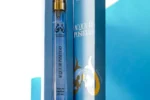6.4L Power Stroke: The Most Problematic Diesel Engine

In the realm of diesel engines, few names resonate as powerfully as the Ford Power Stroke series, renowned for their reliability and performance. Among these legends, the 6.7-liter variant stands tall, representing years of engineering excellence. However, not all iterations have shared this illustrious reputation. The 6.4-liter Power Stroke, produced between 2007 and 2010, is often remembered for its shortcomings rather than its strengths. Particularly, the 2008 model year stands out as a challenging chapter in Ford’s history, marked by significant mechanical issues and disappointing fuel economy. This introduction explores the trials faced by the 2008 6.4 Power Stroke, shedding light on why it is often regarded as one of the less favorable entries in the Power Stroke lineup.
| Attribute | Details |
|---|---|
| Engine Model | Ford 6.4-liter Power Stroke |
| Production Years | 2007 – 2010 |
| Predecessor | Ford 6.0 Power Stroke |
| Replacement | Ford 6.7-liter Power Stroke (introduced in 2011) |
| Key Features | – Twin turbochargers – High-pressure common rail fuel injection – 650 lb-ft of torque at peak |
| Worst Year | 2008 |
| Major Issues | – Emissions system problems (DPF issues) – Poor fuel economy (average 12 mpg) – Oil dilution problems |
| Fuel Economy Problem | DPF requires extra fuel for cleaning, reducing overall mileage. |
| Oil Dilution Cause | Unburned fuel mixing with oil due to DPF regeneration strategy. |
| Potential Risk | Could lead to catastrophic engine failure. |
The Rise and Fall of the Ford 6.4L Power Stroke
The Ford 6.4-liter Power Stroke diesel engine was produced from 2007 to 2010. Although it had some impressive features like twin turbochargers and high-pressure fuel injection, it didn’t last long in the market. Many people remember this engine as a disappointment because it inherited some problems from its predecessor, the 6.0-liter model. These issues led to its quick replacement with the more reliable 6.7-liter version in 2011.
The short lifespan of the 6.4-liter engine gives us an important lesson about automotive engineering. While it offered strong torque and power, it struggled with major issues like poor fuel economy and oil dilution. These problems made drivers unhappy and raised concerns about the engine’s reliability, showing that even powerful engines need solid designs and quality parts to succeed in the long run.
Understanding the DPF and Its Impact on Performance
The Diesel Particulate Filter (DPF) is an essential part of modern diesel engines, including the 2008 Ford 6.4 Power Stroke. It captures soot particles from the exhaust to keep the air clean. However, this system became notorious for causing problems, as it often required extra fuel to clean itself, leading to poor fuel economy for drivers. Many owners reported getting only about 12 miles per gallon, which is quite low for a diesel truck.
The DPF’s cleaning process, known as regeneration, can further reduce fuel efficiency. During this cycle, fuel consumption increases as the engine burns extra fuel to clear out trapped soot. This situation frustrated many drivers who expected better performance from their trucks. Understanding how the DPF works is crucial for anyone considering a diesel vehicle, as it highlights the balance between emissions control and engine performance.
The Consequences of Oil Dilution in Diesel Engines
Oil dilution is a serious issue that can affect diesel engines like the 2008 6.4 Power Stroke. This problem occurs when unburned fuel mixes with the engine oil, which can lead to severe damage. In this model, the DPF system contributed to oil dilution through a post-injection strategy meant to help with emissions. Unfortunately, this design flaw caused fuel to mix with the oil, putting the engine at risk of catastrophic failure.
If not addressed, oil dilution can lead to lower lubrication quality and increased wear on engine components. This can result in costly repairs and a shorter lifespan for the engine. For diesel truck owners, it’s essential to monitor oil levels and quality regularly, ensuring their engines remain healthy and reliable. Knowing about oil dilution can help drivers make informed decisions and avoid potential pitfalls.
The Evolution of Ford Power Stroke Engines
The evolution of Ford’s Power Stroke engines showcases their commitment to improving diesel technology over the years. Beginning with the 7.3-liter engine, which set a high standard for reliability and performance, Ford has consistently sought to enhance its offerings. Each iteration has brought notable advancements, such as increased power output and better fuel efficiency, culminating in the highly praised 6.7-liter Power Stroke. This evolution reflects Ford’s adaptability to changing regulations and consumer demands, positioning them as leaders in the diesel market.
However, not every engine in this lineage has been a success story. The 6.0 and 6.4 Power Stroke engines, despite their innovative features, were plagued with reliability issues that tarnished their reputation. With lessons learned from these experiences, Ford focused on creating a more robust and dependable engine with the introduction of the 6.7-liter variant in 2011. This engine has since earned accolades for its exceptional performance and durability, proving that Ford can bounce back from missteps and deliver quality diesel engines.
Common Issues with the 6.4 Power Stroke
The 6.4-liter Power Stroke, while equipped with advanced features like twin turbochargers and high-pressure common rail fuel injection, faced significant reliability challenges during its production run. The most pressing issues stemmed from its emissions systems, particularly the diesel particulate filter (DPF). Many owners reported the DPF was prone to clogging, leading to costly replacements and decreased vehicle performance. This not only affected the overall driving experience but also raised concerns about the long-term viability of the engine.
Another major issue associated with the 6.4 Power Stroke was oil dilution, which posed a serious risk to engine health. This problem occurred when unburned fuel mixed with engine oil, potentially leading to catastrophic failures. The DPF system’s post-injection strategy intended to facilitate cleaning but instead contributed to this detrimental mixing. As a result, many owners faced the daunting prospect of engine repairs or replacements, reinforcing the notion that the 6.4 Power Stroke was not one of Ford’s best offerings in the diesel segment.
Why the 2008 Model Stands Out (for All the Wrong Reasons)
The 2008 model year of the 6.4 Power Stroke is frequently cited as one of the worst due to a combination of design flaws and performance issues. Owners reported poor fuel economy, with averages hovering around 12 miles per gallon, which was substantially lower than expected for a heavy-duty truck. The primary culprit, the DPF, required additional fuel during its regeneration cycle, further diminishing efficiency and frustrating many drivers who relied on their trucks for work and daily use.
In addition to fuel economy woes, the 2008 6.4 Power Stroke was notorious for its emissions-related problems. The costs associated with replacing or repairing the DPF system added to the engine’s negative reputation. With many owners facing expensive maintenance bills and diminished performance, the 2008 model became a cautionary tale in the automotive world. This experience ultimately paved the way for Ford to refine their diesel offerings, leading to the much more reliable 6.7-liter Power Stroke engine introduced shortly thereafter.
Lessons Learned from the 6.4 Power Stroke Experience
The experience with the 6.4 Power Stroke has provided valuable lessons for automakers and diesel enthusiasts alike. One key takeaway is the importance of thorough testing and validation of new technologies before market release. The challenges faced by the 6.4, particularly regarding emissions systems, highlight how critical it is for manufacturers to anticipate potential issues and address them proactively. This approach can significantly enhance customer satisfaction and brand loyalty.
Moreover, the 6.4 Power Stroke’s shortcomings underscore the necessity for ongoing innovation in diesel technology. As regulations continue to tighten and consumer expectations evolve, manufacturers must focus on creating engines that not only meet compliance standards but also deliver exceptional performance and reliability. Ford’s subsequent development of the 6.7-liter Power Stroke demonstrates a commitment to learning from past mistakes, ultimately resulting in a more successful and well-regarded diesel engine that continues to serve a wide array of customers today.
Frequently Asked Questions
What is the Ford Power Stroke diesel engine?
The **Ford Power Stroke diesel engine** is a type of engine made by Ford that is known for its power and durability. It helps trucks pull heavy loads and is famous for being reliable.
Why is the 6.4-liter Power Stroke engine not very popular?
The **6.4-liter Power Stroke engine** is not popular because it had many problems, especially with its **emissions system**. These issues made it expensive to fix and caused poor fuel economy.
What problems did the 2008 Ford F-350 with the 6.4L engine face?
The **2008 Ford F-350** had issues like bad fuel economy, only averaging **12 miles per gallon**, and problems with the **diesel particulate filter (DPF)** that needed costly repairs.
What does oil dilution mean in a diesel engine?
**Oil dilution** happens when unburned fuel mixes with the engine oil. This can damage the engine, making it work poorly or even fail, especially in the 6.4L Power Stroke.
What was a major feature of the 6.4-liter Power Stroke engine?
One major feature of the **6.4-liter Power Stroke engine** was its **twin turbochargers**, which helped it produce a lot of power, reaching up to **650 lb-ft of torque**.
Why did Ford replace the 6.4-liter Power Stroke with a new engine?
Ford introduced a new engine, the **6.7-liter Power Stroke**, because the 6.4L had many problems. The newer engine was better received and more reliable for drivers.
What is DPF regeneration in diesel engines?
**DPF regeneration** is a process where the engine burns off soot from the **diesel particulate filter**. This process can use extra fuel, lowering the truck’s fuel economy.
Summary
The content discusses the Ford 6.4-liter Power Stroke diesel engine, highlighting its reliability issues during its short production run from 2007 to 2010. It notes that this engine inherited design flaws from its predecessor, the 6.0 Power Stroke, leading to significant problems, particularly with its emissions system and diesel particulate filter (DPF). The 2008 model is particularly criticized for poor fuel economy, averaging only 12 miles per gallon, mainly due to the DPF’s fuel usage during regeneration cycles. Additionally, oil dilution issues were prevalent, posing risks of severe engine damage, ultimately leading to the introduction of the more reliable 6.7-liter diesel in 2011.






